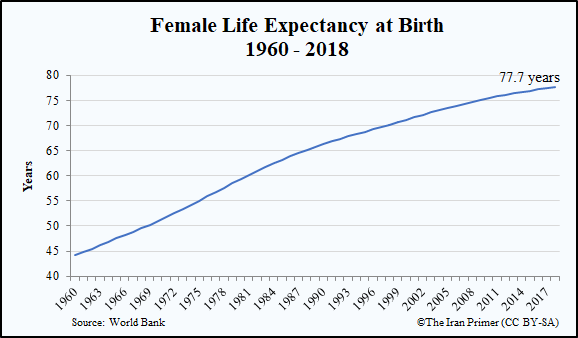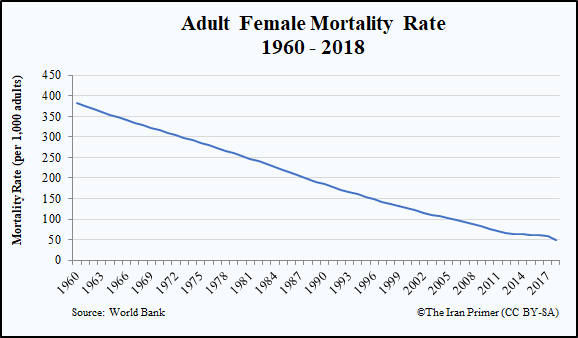Since the 1979 revolution, the status of women in Iran has improved significantly in the fields of education and literacy, the labor force and lifespan. The number of women in parliament has quadrupled. But the gains are uneven. Women, for example, are still a distinct minority in top government positions and management jobs. The following are key statistics covering the end of the monarchy through four decades of the Islamic Republic.
More in this series:
- Part 1: Phases of the Women's Movement
- Part 2: Profiles of Women Politicians, Activists
- Part 3: Iranian Laws on Women
- Part 4: Khomeini and Khamenei on Women
On Education:
- Female adult literacy more than tripled – from 24 percent in 1976 (nearing the end of the monarchy) to 81 percent in 2016.
- Females who finished primary education increased from 36 percent in 1971 to 99 percent in 2017.
- The percentage of females in higher education (tertiary) increased by nearly 20 times – from three percent in 1978 to 59 percent in 2018.

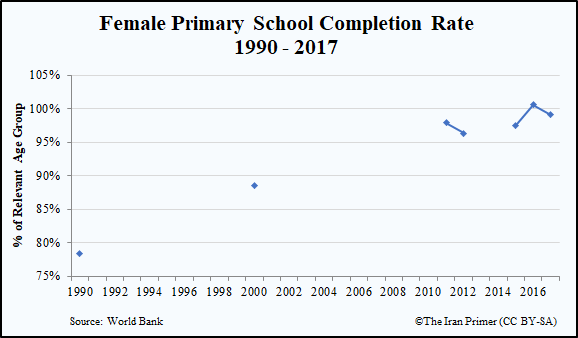
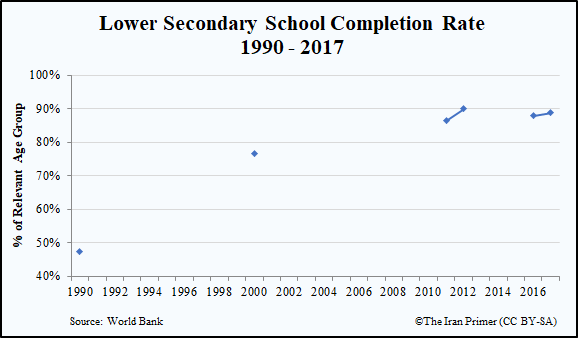
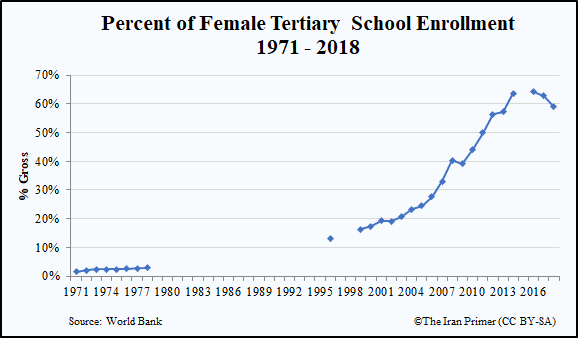
On Jobs:
- The percentage of women in the workface almost doubled in three decades – from 11 percent in 1990 to 19 percent in 2020.
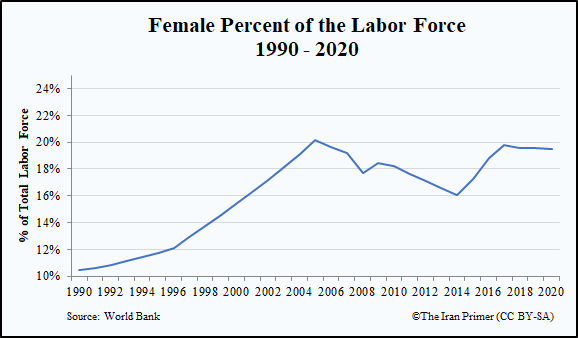
On Children and Families:
- The average number of births per woman fell from more than six in 1978 to less than two in 2001. As of 2018, the average births per woman was just over two.
- Maternal mortality decreased significantly from 275 deaths (per 100,000 women) in 1975 to 150 deaths in 1990 and to 16 deaths in 2017.
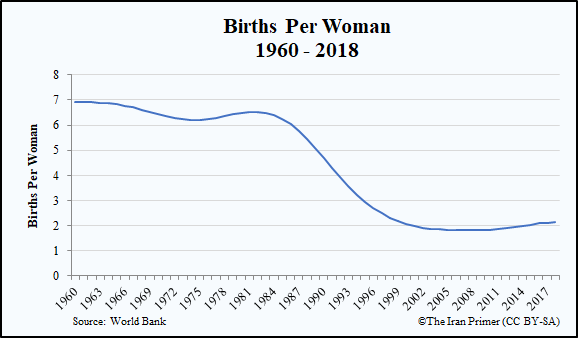

On Marriage and Divorce:
- The average age of marriage for females increased by roughly four years – from 19.7 years in 1977 (on the eve of the revolution) and rose to 23.5 years in 2006. It slightly fell to 23.1 years in 2016.
- The revolutionary government lowered the age of marriage for women from 18 to 13 in 1979 then to nine in 1982). In 2002, Parliament raised the age of marriage back to 13 for girls (and to 15 for boys).
- In 2008, one in eight marriages ended in divorce. By 2018, one in three marriages ended in divorce.
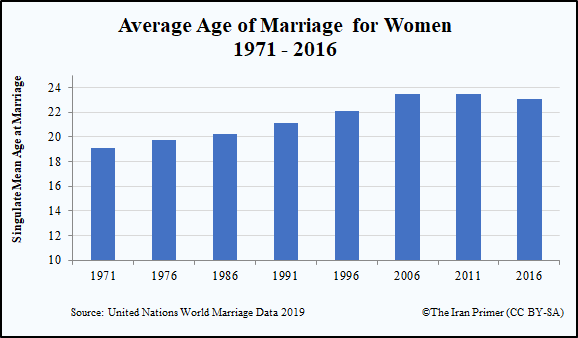
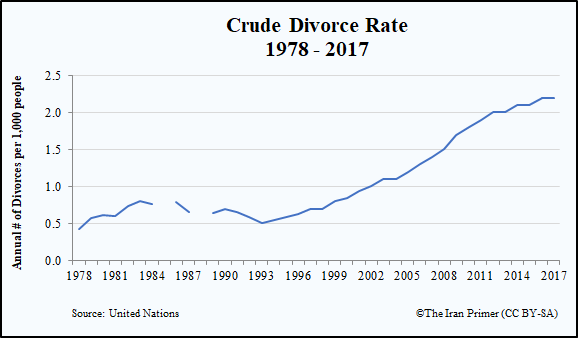
The divorce rate has increased more than fivefold – from less than one divorce per 1,000 people in 1978 to more than two divorces per 1,000 people in 2017.
On Lifespan:
- Female life expectancy increased by almost two decades – from 58 years in 1979 to 77.7 years in 2018.
- The female mortality rate – which includes everything from medical conditions to accidental deaths – decreased from 267 deaths (per 1,000 adults) in 1978 to 50 deaths in 2018.
